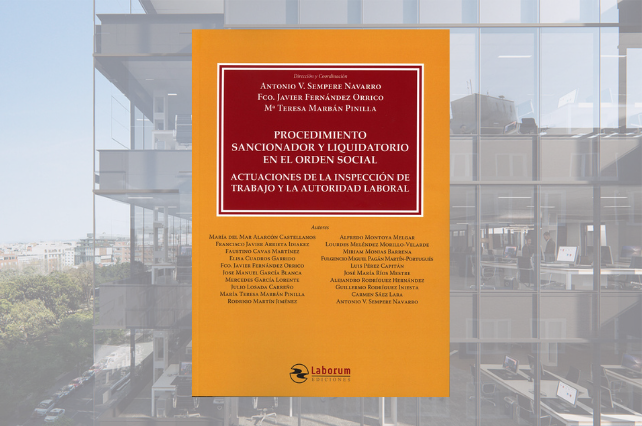The new Pay Transparency Directive (EU) 2023/970 will mark a before and after in how companies manage and communicate their pay policies.
In the article “How Much Do You Earn? The New Transparency Test for Companies,” Iñigo Sagardoy, President of Sagardoy, Montserrat Alonso, Partner at the firm, and Alba García López, Senior Director of Crisis, Risk and Legal Issues at LLYC, analyse the main legal and reputational challenges posed by this new regulation and how organisations should prepare to comply with their new obligations.
How Much Do You Earn? The New Transparency Test for Companies
By Montserrat Alonso and Iñigo Sagardoy, Partners at Sagardoy, and Alba García López, Senior Director of Crisis, Risk and Legal Issues at LLYC.
The uncomfortable question that for decades has circulated in hushed tones within companies — “How much do you earn?” — is about to become vox populi. Directive (EU) 2023/970 on pay transparency between women and men must be transposed into Spanish law by June 2026, and its arrival promises to transform the salary culture and corporate narrative of organisations.
Until now, information on salaries and pay criteria has existed in a grey area between discretion and confidentiality, often protected by contractual clauses. But the Directive introduces a paradigm shift: it recognises workers’ right to know pay criteria, bans confidentiality clauses, requires disclosure of pay bands, and mandates the publication of gender pay gaps when they exceed certain thresholds.
What was once confidential will now become public. What was once an internal matter will now be subject to social and media scrutiny. Pay transparency will become a new mirror in which companies must look at themselves — and where others will be able to see them.
The reputational risk of the new regulation
Beyond the potential sanctions, the greatest challenges will be legal and reputational. The disclosure of pay data brings risks that affect four critical dimensions of corporate reputation:
- Transparency, because it will expose companies that fail to communicate proactively or are perceived as concealing or manipulating data.
- Integrity, because organisations will need to demonstrate ethical behaviour across all areas.
- Credibility, because inconsistencies between stated values on equality and actual data will become evident.
- Contribution, because the gender pay gap will cease to be an internal metric and will become a social expectation of genuine commitment to equality.
In this context, pinkwashing — communicating symbolic progress without real backing — becomes a risk with exponentially greater exposure and impact. With transparency now a legal obligation, empty messaging may trigger reputational crises: the numbers will tell the truth, with or without a press release.
Preparing to comply with obligations and to lead the conversation
To prevent transparency from becoming a risk, companies must approach it with a cross-functional vision. Coordination between Legal, Human Resources and Communication departments will be essential to balance three objectives: to comply with the law, protect sensitive information and sustain a coherent narrative.
The starting point must be a comprehensive diagnosis that makes it possible to understand the remuneration reality, identify areas for improvement and anticipate possible impacts. From there, it will be necessary to implement a plan for the avoidance, mitigation or leveraging of risk, as appropriate. Companies starting from a solid position will be able to use transparency as a reputational lever; those that do not will need to act before the data speak for themselves.
And it should not be forgotten the obligations established by the Directive, which will foreseeably be applicable to Spain following its transposition:
- Pre-employment pay transparency: job applicants will have the right to receive from the potential employer information on the following: (i) the initial remuneration or initial pay band based on objective, gender-neutral criteria corresponding to the position sought, and (ii) the relevant provisions of the collective agreement applied by the employer with respect to the position. No employer may ask applicants questions about their pay history in their current or previous employment relationships. Employers must ensure (i) that job vacancy announcements and job titles are gender-neutral, and (ii) that recruitment processes are conducted in a non-discriminatory manner.
- Transparency in pay-setting and pay-progression policies: employers shall make available to their staff, in an easily accessible manner, the criteria used to determine remuneration levels and pay progression. Such criteria shall be objective and gender-neutral. Member States may exempt employers with fewer than 50 employees from the obligation related to pay progression.
- Likewise, employees shall have the right to request and receive written information on their (i) individual pay level and (ii) average pay levels, broken down by sex, for categories of employees performing the same work or work of equal value to their own. Employees shall have the possibility of requesting and receiving the aforementioned information through their workers’ representatives or through an equality body. Employers shall inform their entire workforce annually of their right to receive the information and of the steps to be taken to exercise that right. Employees shall not be prevented from disclosing their pay for the purpose of enforcing the principle of equal pay.
Furthermore, the reduction of the pay gap threshold for the same category from 25% to 5% will require companies to justify a greater number of pay discrepancies, in order to demonstrate that such differences are not related to gender or the workers concerned but are based on objective and gender-neutral criteria. It will also be necessary to review confidentiality and information management protocols, since some sensitive data will become less secret. The risk of leaks or loss of competitive advantage will increase dramatically and calls for preparedness.
Finally, organisations must take the lead in their own narrative. Transparency cannot be improvised: it is built through coherence and anticipation. Companies that accompany data with context, commitment and self-criticism will be able to turn a regulatory obligation into an opportunity for social leadership.
In the era of permarisk in which we live, it is more necessary than ever to develop antifragility strategies that not only enable organisations to withstand impacts but also to seize the opportunities that regulations such as this can generate.
The Pay Transparency Directive marks the end of an era: that of opaque salaries and forbidden conversations. From now on, the question “How much do you earn?” will no longer be uncomfortable, but rather part of the debate on fairness and trust.
Companies that understand this cultural shift before it becomes mandatory will be better prepared not only to comply with the law but also to lead the conversation. Because in the new economy of transparency, the answer to “How much do you earn?” will say much more about how much a company is truly worth.


